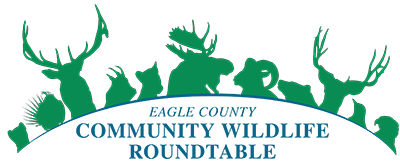Keystone Species

Rick Spitzer
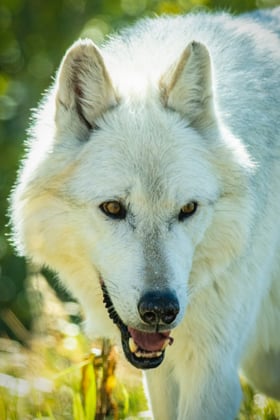
Ecologists have long understood food chains. The animal at the top, the prime predator in an ecosystem, was believed to be the most significant. That predator helped keep their prey in check.
That belief has some value but does not fully describe the dynamics of a community or ecosystem. The view of the impact of predator/prey relationships changed in 1963 when Robert Paine, a researcher at the University of Washington, was observing tidal pools along the rocky coasts of Makah Bay in Washington State. He noticed that sea stars preyed extensively on mussels. They were at the top of the food chain but, he began to wonder what would happen in the tidal pools if there were no sea stars.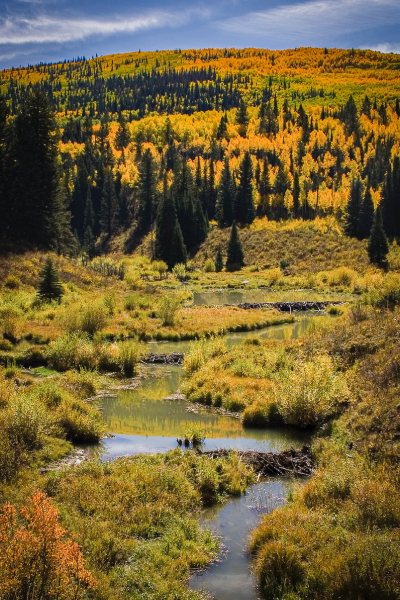
Spruce/fir forests may change over time due to climate change. This would have a huge impact on that ecosystem and
all the plants and animals that currently occupy it.
He decided to compare two areas of shoreline. In one he did nothing. In the other he removed the sea stars and threw them into the sea. He discovered something he did not expect. Where he removed the sea stars, the mussels, with no predators, proliferated and took over the ecosystem. The many seaweeds, sponges and anemones that were common in the tidal pools were organisms that the sea stars did not consume. Instead of surviving they also died off. That ecosystem collapsed, and the only large organism left were the mussels.
His work showed that a single species could radically change the diversity of an ecosystem and interfering with it could cause the ecosystem to change radically or collapse. He called that species the “keystone species.” It is believed that there is probably a keystone, or many keystone species, in all the world’s ecosystems. Keystone species have a disproportionally large impact on the community compared to the prime predator.
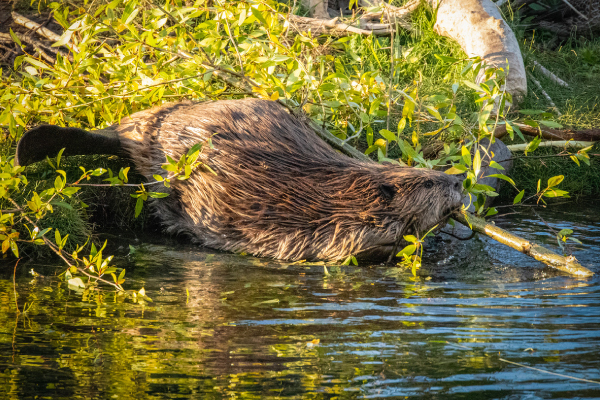 Beaver dam up streams and drastically alter the environment. As a keystone species, they create an environment with unique plants
Beaver dam up streams and drastically alter the environment. As a keystone species, they create an environment with unique plants
and animals due to slower moving water that spreads out in the valley floors.
A keystone is the topmost stone in an arch that holds the entire structure together. Keystone species are defined as species that have a disproportionately large effect on the communities in which they occur. They help maintain biodiversity and there are no other species in the ecosystem that can serve their same function. Without them, their community and their ecosystem would change dramatically or could even cease to exist.
Keystone species are not necessarily predators. A keystone species can be anything from fungi, plants, herbivores, or carnivores. They may not be the organism with the largest population. There may be more than one keystone species that impact parts of a large ecosystem.
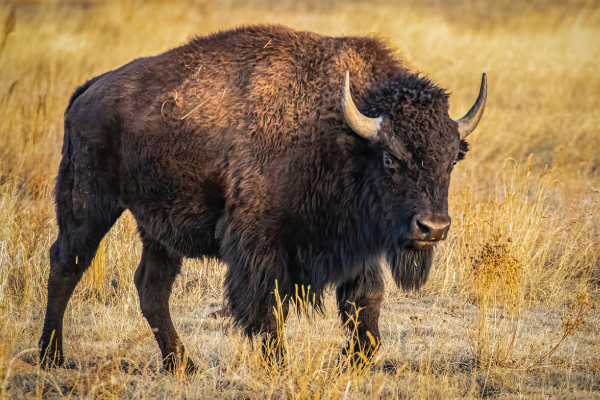 American bison impacted the Great Plains as a keystone species because of their habits and huge population.
American bison impacted the Great Plains as a keystone species because of their habits and huge population.
Keystone species will influence the food chain in a specific habitat. They may prevent soil erosion, help keep temperatures cooler, or keep populations in check. They are what balances the ecosystem.
In our area, one keystone species is the beaver. Beaver dramatically change the environment into a wetland habitat because of their dams. When a stream is dammed the water that floods the valley floor changes the vegetation around the ponds and the stream. Water changes speed and temperature and that changes the types of aquatic creatures found there. The stream slows and meanders. That impacts the type of fish in the water, but also the willows and other vegetation that grows along the banks.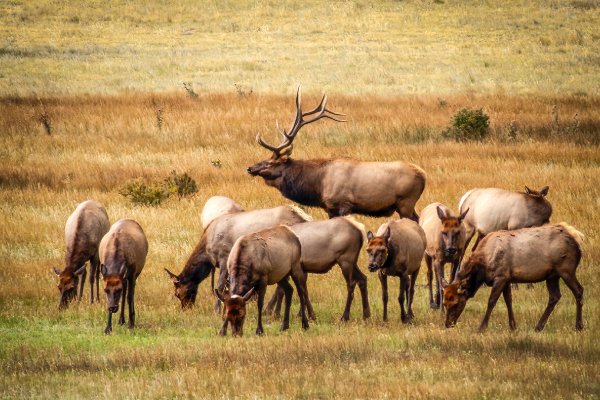
When wolves were brought back the Yellowstone ecosystem, the elk avoided spending much time in the open meadows, to avoid becoming prey for the wolves. This helped eliminate boom and bust population cycles for the elk.
Bison are also a keystone species. Huge herds had a major impact on the habitat of the Great Plains. There are many different species, of plants and animals that thrive there. When the bison fed, they ate the shoots of trees along the streams that reduced the number of trees. Bison aerated the soil with their hooves, and their droppings provided nutrients for the soil and a habitat for many insects that provided food for birds.
Even woodpeckers are keystone species in some environments. Woodpeckers drill cavities into trees to nest, but they generally use the cavity only once. Once abandoned, the cavity is used for nesting by many other species of cavity nesting birds and even small mammals over a significant time period. Many birds cannot drill their own cavities and rely on what is produced by the woodpeckers. They are called secondary cavity nesters. Secondary cavity nesters include eastern screech-owls, American kestrel, tree swallows, eastern bluebirds, European starlings, house sparrows, tufted titmice, purple martins, house wrens, chickadees, and nuthatches. If the woodpeckers were removed from the environment, these and many other species would be impacted.
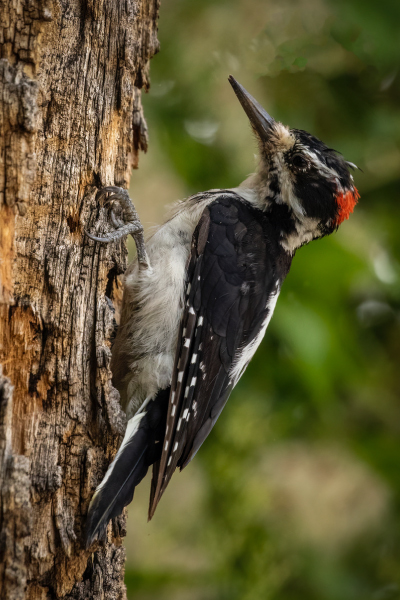 This hairy woodpecker and other woodpeckers create cavities in trees for nests. Those cavities are used in following years by many species for birds and mammals. Without woodpeckers, the environment would be considerably different.
This hairy woodpecker and other woodpeckers create cavities in trees for nests. Those cavities are used in following years by many species for birds and mammals. Without woodpeckers, the environment would be considerably different.
One of the most significant research projects into keystone species involves, the reintroduction of wolves into the Yellowstone ecosystem. It turned out that wolves had a larger impact on the environment than many scientists anticipated.
When wolves were originally extirpated, it took predatory pressure off the elk. The elk populations exploded. Elk no longer moved around much, and they moved into the open valleys. Their winter-browsing increased the impact on young willow, aspen, and cottonwood plants along the streams because they no longer feared wolves as a predator.
 Beaver ponds helps to slow the water. That alters water temperature which produces a different habitat for many species.
Beaver ponds helps to slow the water. That alters water temperature which produces a different habitat for many species.
When the elk began to devour the willow, aspen, and cottonwood plants along the streams, the beaver no longer had the vegetation they needed to survive the winter and they died off. The loss of that vegetation also impacted populations of songbirds. The speed of water increased which changed the water temperature and impacted fish populations.
The grey wolf was reintroduced into the Greater Yellowstone Ecosystem in 1995. At that time there was only one beaver colony in the park. Today the ecosystem has a flourishing beaver population. Why?
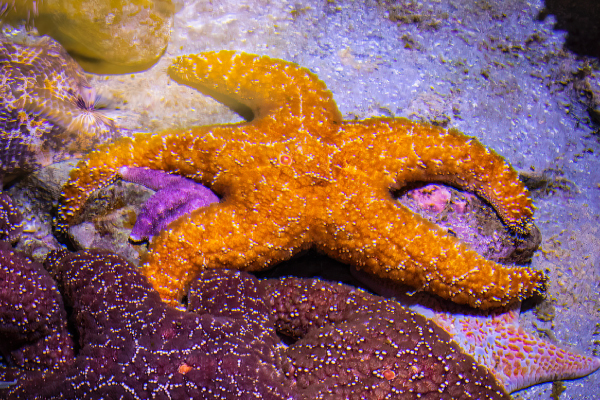 Starfish prey on mussels. They do not feed on the seaweeds, sponges and anemones that are common in the tidal pool. However, when the starfish are removed, the entire ecosystem collapses.
Starfish prey on mussels. They do not feed on the seaweeds, sponges and anemones that are common in the tidal pool. However, when the starfish are removed, the entire ecosystem collapses.
When the wolves were reintroduced, elk moved into heavy timber for protection and that allowed the willow, aspen, and cottonwood plants to rebound. That caused a return of many species to the valleys in the park.
It turned out that the return of the wolves had a stabilizing impact. Elk populations were no longer a boom-bust situation. Some years of starvation that the excessive herd numbers caused in the past no longer occur.
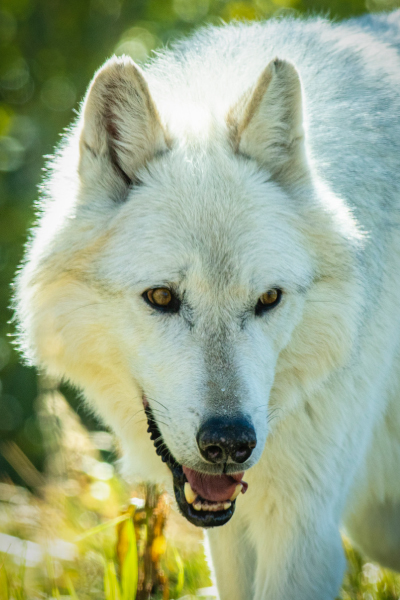 The grey wolf was reintroduced into the Greater Yellowstone Ecosystem in 1995. There was a dramatic and positive change in the ecosystem after that reintroduction.
The grey wolf was reintroduced into the Greater Yellowstone Ecosystem in 1995. There was a dramatic and positive change in the ecosystem after that reintroduction.
Since the wolf reintroduction, the conditions in the communities and environment has changed dramatically. There is still a lot of debate about whether returning a keystone species is enough to restore an entire ecosystem.
Climate change has caused a significant change in temperature and precipitation patterns across the planet. What if those changes impacted a keystone species?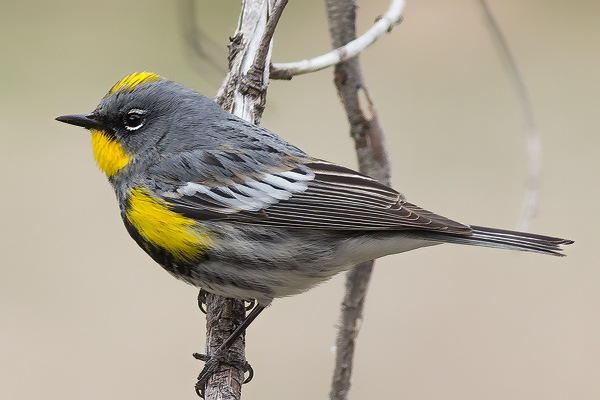
Many songbirds, like this yellow-rumped warbler returned to the Yellowstone Ecosystem after wolves were brought back.
We have already witnessed the impact of pine beetles and the fungus they carry on the lodgepole forests in the mountains of the North and West. As temperatures warm, summer drought increases, and snowpack is lost, the range of lodgepole is affected. Increasing infestations of bark beetles have wiped out many large areas of lodgepole, a keystone species.
What might our environment look like if the spruce/fir forests we enjoy around us were impacted by the change in temperature and precipitation patterns that are the result of climate changes? Recovering forests, even with the best of efforts, takes hundreds of years. The loss of forest communities or ecosystems would be devastating.
Any change to an ecosystem may shift the balance of keystone species and that, in severe situations, may cause the collapse of an entire ecosystem, a result that Robert Paine demonstrated with the impact of sea stars in the tidal pools in the Pacific Northwest.
The reality is that humans do not fully understand the dynamics of many of the ecosystems of the world. We are seeing major environmental changes worldwide. Do we have time to continue to debate the issues?

Rick Spitzer
Rick Spitzer is the author of the article and official photographer for Eagle County Community Wildlife Roundtable.
Blog posts
Related Articles.
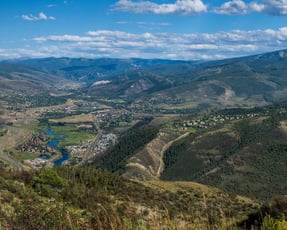
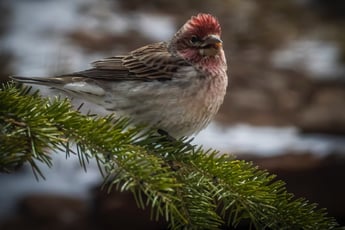

Rick Spitzer
Winter Bird Feeding
If you set out bird feeders, you are not alone. The US Fish and Wildlife Service estimates that...
